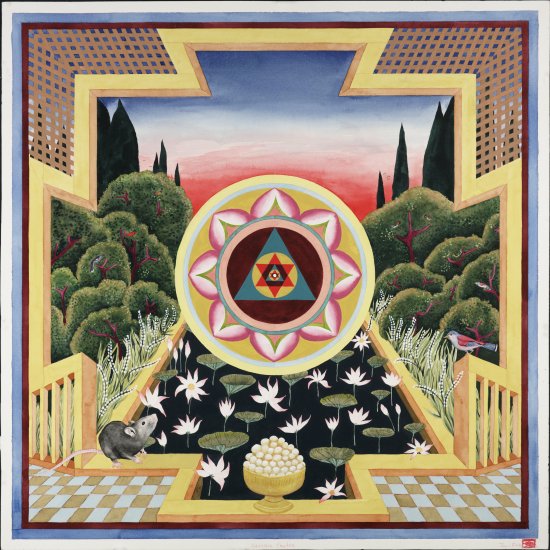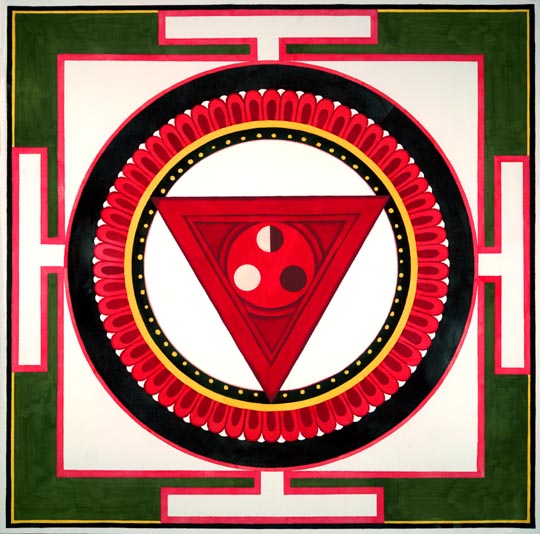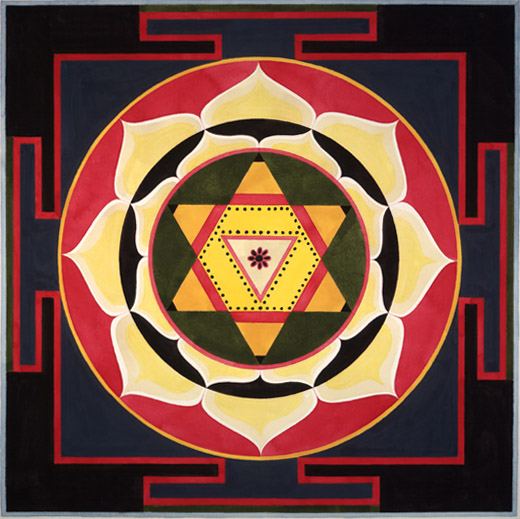Sri-Laksmi’s birth is said to be the result of the austerities of Prajapati, the great progenitor. Sri is invoked to bring fame and prosperity. She is said to bountiful and to give abundance, and to bestow on her worshiper gold, cattle, horses, and food. She is asked to banish her sister, Alaksmi, “misfortune,” who appears in such inauspicious forms as need, poverty, hunger and thirst. She is delighted by the sounds of elephants. In outward appearance she is glorious and richly ornamented. She is radiant as gold, illustrious like the moon. She is often said to shine like the sun and to be lustrous like fire. She is associated with the lotus which is a symbol of fertility and life. This fertility is rooted in and takes its strength from the primordial waters. The lotus symbolizes vegetative growth that has distilled the life-giving power of the waters into embodied life. It is this lotus-power that is revealed in Sri-Laksmi.
Derived from the writings of David Kinsley, Hindu Goddesses







